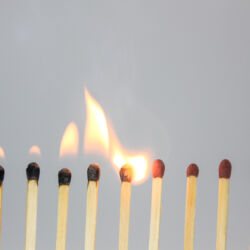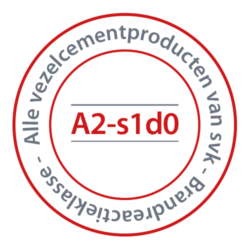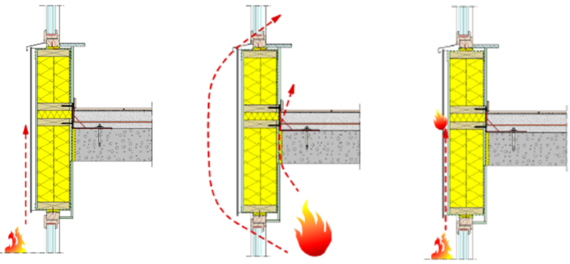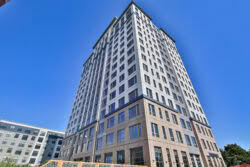Fire-safe construction products
Fire safety occupies an increasingly important place in building design. Rightly so, because the recent past has taught us that the consequences in the event of a fire can be dramatic. Moreover, our available building space is getting smaller. As a result, more and more buildings are being built at height and buildings are getting closer together. It is therefore important to take this into account as early as the design phase. Thanks to their standard reaction to fire class A2-s1, d0, SVK fibre cement façade panels meet the most stringent fire safety requirements. Our façade materials also comply with European standard EN 13501-1

Reaction to fire
Reaction to fire means that in the event of a fire, it is initially important to slow its development and prevent the rapid spread of flames. This is at the level of the product itself. The fire response can be influenced by using building materials that are difficult to ignite or have low flammability. Compare it to a burning wad of paper in an empty metal rubbish bin or that same burning wad in a full paper basket. This makes it important to test the fire response of products that may be near a fire.
Fire resistance
Fire resistance, on the other hand, is considered when the fire is fully developed, however. The goal is to avoid the expansion and spread along or through the building and to guarantee the stability of the building for a certain period of time. For this purpose, the fire resistance of the building elements is tested. Fire resistance says something about how long a construction element will retain its function (including stability) in the event of fire.

How is the reaction to fire determined?
Reaction to fire is the behaviour of a construction product that – through its own decomposition – fuels the fire to which it is being exposed under specific conditions. For fire class A2, this is determined by 2 tests:
- Determination of the calorific potential of the product
This is the amount of heat developed when burning and provides an insight into the contribution the product can make in the event of a fire. The lower the calorific value, the better. - The Single Burning Item (SBI) test
The test focuses on heat production, horizontal flame spread, smoke production and the development of burning droplets
Tests for fire resistance are mandatory for construction materials belonging to reaction to fire classes B through F. Since fibre cement materials belong to fire class A2 and have a calorific value ≤ 3.0 MJ/kg, further tests are not necessary.
Each product is then assigned a reaction to fire class consisting of three factors:
- Class A to F
- Smoke development, 's' for smoke
- Production of burning droplets, 'd' for droplets
SVK façade panels are fire-retardant
All the fibre cement products in SVK's range belong to reaction to fire class A2-s1, d0 in accordance with European standard EN 13501-1:
- Class A1 and A2 are awarded if the materials contribute to a fire in only a very limited way under the most severe conditions.
- s1 means there is only limited smoke development
- d0 represents no burning drops
SVK façade panels are thus virtually incombustible and will barely contribute to the development or continuation of a fire. This is because fibre cement consists primarily of cement, supplemented by a small percentage of fibres and fillers. The result of the large proportion of cement ensures that our materials have such a favourable reaction to fire.
The advantages of fibre cement as fire-resistant façade cladding
Fire is a complex phenomenon and depends on many factors. A building's fire safety is affected by proper or improper implementation and compliance with regulations. This applies to any construction and when applying any material used. It is the interaction between the various components, their spatial arrangement and how they are installed that ultimately determine how a façade system behaves when exposed to fire. Correct information on the fire behaviour of construction materials is necessary.


Fire legislation
The new fire legislation imposes specific requirements on buildings according to height
- low buildings (height < 10 m)
- medium buildings (10 m ≤ height ≤ 25 m)
- tall buildings (height > 25 m)
Looking at the requirements for exterior cladding, we see that for the most stringent requirement (tall buildings), they must have a reaction to fire class of at least A2-s3, d0. All of our fibre cement products comply with this, which makes SVK façade panels and slates the strongest link. It is important for the overall façade implementation that all the essential components used (support structure, sub-frame, insulation materials, thermal breaks, sealants, vapour barriers, tapes, etc.) must meet the requirements set by the legislation.
Fire-safe products
Watch the video alongside explaining reaction to fire class A2-s1, d0.